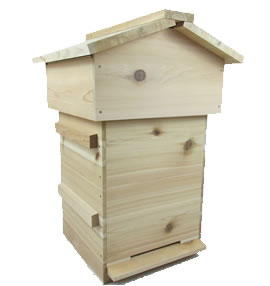ALL TYPES OF BEEHIVES
Self Flow Beehive
The Self-flow hive is an innovative beehive design that simplifies the process of harvesting honey. It features specially designed frames with hexagonal cells and a unique mechanism that allows beekeepers to extract honey directly from the hive without disturbing the bees.
Langstroth Beehive
The Langstroth hive is a vertical design consisting of rectangular boxes stacked on top of each other. It allows for easy inspection and manipulation of frames, making it one of the most widely used hive types worldwide.
Warre Beehive
The Warre hive is a vertical top-bar hive where bees build comb downward from bars at the top. It aims to mimic natural bee behavior and is less intrusive during hive inspections, making it popular among beekeepers seeking a more naturalistic approach.
Top-bar Beehive
Top-bar hives have a horizontal layout, with bars placed across the top where bees build their comb downward. They offer simplicity and mimic the natural structure of tree hollows, suitable for beekeepers preferring a hands-off approach.



